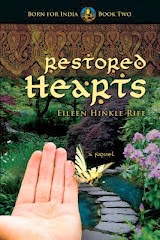(The following article was first published in 2011 on The Christian Post Bindings blog).
The question, “Who will weep for
the homosexual?” has been ruminating in my mind and heart the last day or so.
Is my heart broken for these individuals
who through their same-sex thoughts, feelings, and behaviors are longing for a
relationship that satisfies?
Those with unwanted same-sex
attraction are craving the beauty and pureness of God’s original intent:
marriage between one man and one woman for a lifetime (Genesis 2:24-25; Mark
10:6-9; Ephesians 5: 22-33). Moses, Jesus, and Paul tie together the thread of
Scripture on marriage, reiterating God’s created design for male and female who
are equipped and sanctioned to come together as one flesh.
The yearning in the heart of one
who longs to follow God’s intended model, but feels s/he cannot, creates
enormous emotional, psychological, and spiritual conflict.
And rightly so. As with any sinful
dysfunction—whether it be greed, alcoholism, compulsive eating, stealing, shopping,
or lying—it is conflict that can move the hurting individual to seek help. Pain
paves the way for change. In 1 Corinthians 6:9-11, the apostle Paul presents
one of the strongest statements concerning the truth that homosexuals can
indeed change. In this passage, homosexuality is listed as one among many sins from which the Corinthian believers had been delivered. Paul says, But you were washed, you were sanctified,
you were justified in the name of the Lord Jesus Christ and by the Spirit of our
God. What great hope this offers
those dealing with unwanted same-sex attraction.
However, restoration is not an easy
process. The inner need for acceptance, approval, and love can drive a person
to seek satisfaction in any number of forms. An addiction is a person’s way of
addressing a love hunger for God, temporarily anesthetizing the emotional pain
that usually comes from past hurts. The addiction satisfies for a time—Satan’s
way of reeling the person in—but sooner or later the addiction results in a
sickening spiral down. The ensuing lack of control creates a greater need, and
thus the addiction fuels itself.
For my character, Tim, in the novel
RESTORED HEARTS, he seeks the male affirmation he missed from his father in
eroticized relationships with other men. The Holy Spirit keeps nudging his
heart, causing him to realize the deception of his behavior. He runs from Boston back to his
missionary upbringing in India
in hopes that he can leave his homosexual lifestyle behind once and for all.
But he soon discovers he cannot.
It takes the wise discernment of
the mission psychologist to help Tim unearth the roots of his sinful
dysfunction and enter into a healing process which incorporates a loving
relationship with Jesus Christ at the center. Dr. Hauser weeps for and with
this hurting young man over his loss of paternal love and approval. As a godly
father figure, he stands with him as he faces his brother’s anger and
rejection. When others ignore Tim, Dr. Hauser remains by his side as he
struggles, fails, and gets back up again. Like Jesus, he presents a mix of
truth and grace. Conviction and compassion. He helps Tim embrace his identity
in Christ as a beloved, fully forgiven, and totally accepted son of the
heavenly Father (Ephesians, chapter one).
As I developed my character Tim, I,
too, wept alongside of him. His pain became my own. I grieved when his brother
rejected him, when the pastor ignored him, and when the Indian girl, Esha,
loved him, but was ignored by him because Tim could not respond to her
affection. I saw myself in the differing reactions, and I was moved to tears.
My prayer is that I will continue
to weep for the homosexual. The struggle is great and not to be minimized in
any way. It is a cry for relationship with the Father. Something each of us can
prayerfully identify with.
Leave a comment below, along with your email address, and enter to win a Kindle copy of Restored Hearts. Winner announced on October 31!





